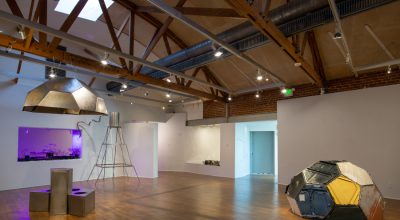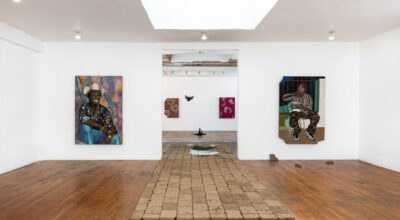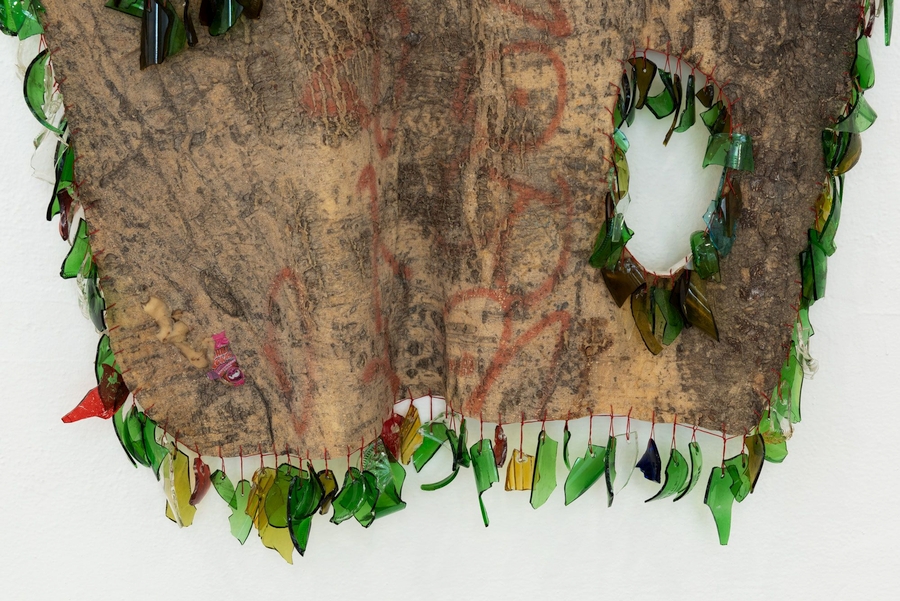
EDDIE RODOLFO APARICIO: ESPINAS AMOROSAS
Eddie Rodolfo Aparicio (b. 1990, Los Angeles, USA) investigates the collective trauma and memory embedded in the material-ecological record of human and nonhuman lives—their mingled roots tracing a remarkable history of entanglement.
A visual cacophony of graffiti, carvings, bark imprints, and growth patterns plays across a series of tapestries exhibited in his current show at Commonwealth and Council. They consist of rubber laminae cast from trees in the Pico-Union and Westlake neighborhoods of Los Angeles, where large communities of Central American immigrants make their homes.
Several of the trees have been cut down, their casts memorializing the ever-changing landscape of Aparicio’s hometown and forced displacement of integral immigrant communities. Unavoidably for him, they also recall mass deforestation of El Salvador during its civil war. Supplied with thousands of tons of napalm, white phosphorus, and planes by the US, the Salvadoran military sprayed huge percentages of the country’s forested area as a counterinsurgency tactic that left entire forests bare of leaves, scarring people and landscape alike for generations.

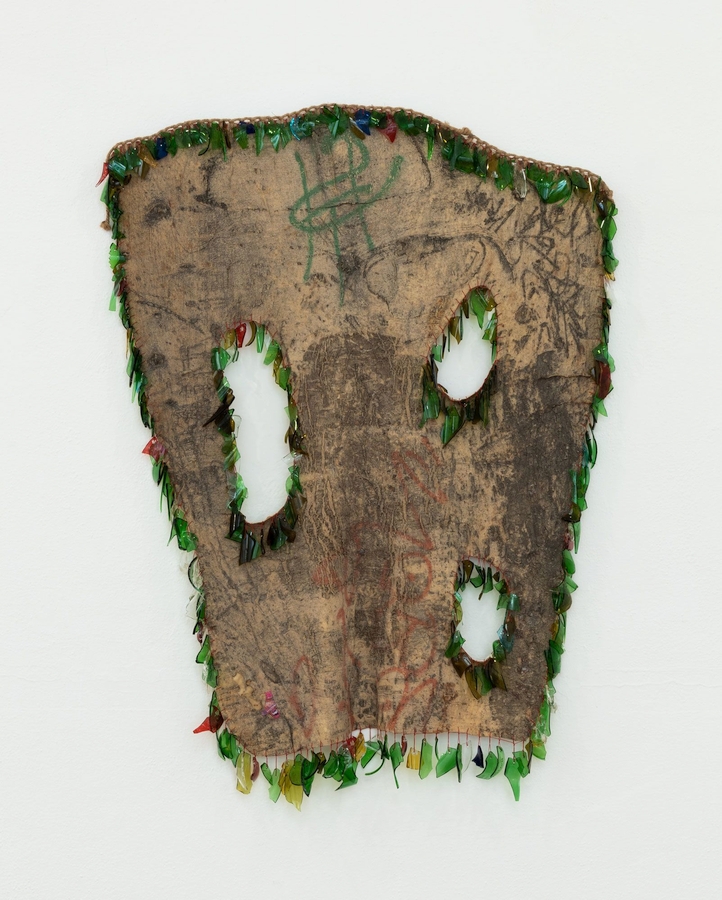
Like any shed skin, casts illustrate what goes on in what’s left behind and document the marks that people, cars, and animals have made. Rubber trees bleed latex when cut, which binds their damaged bark—producing the valuable commodity sought by European imperial powers and the US alike. For Aparicio, rubber itself exudes the symmetry between the commodification of Indigenous material culture and the exploitation of Latin American countries for labor and resources. Restored to its natural function, it also suggests a salve: dressing the wound, repairing the broken, displaced, and dispossessed.
There is joy, too, in this material diaspora. Like the subterranean networks of plants and fungi, it comprises a vital infrastructure, transmitting memories, inherited ways of making, and resources between far-flung generations.
Shards of broken glass bottles—sourced from friends and family, smashed and sewn into the edges of the tapestries—represent a nexus of community, pleasure, release, and meditation while invoking the Latin American vernacular practice of lining a home’s perimeter with broken glass as accessible security.

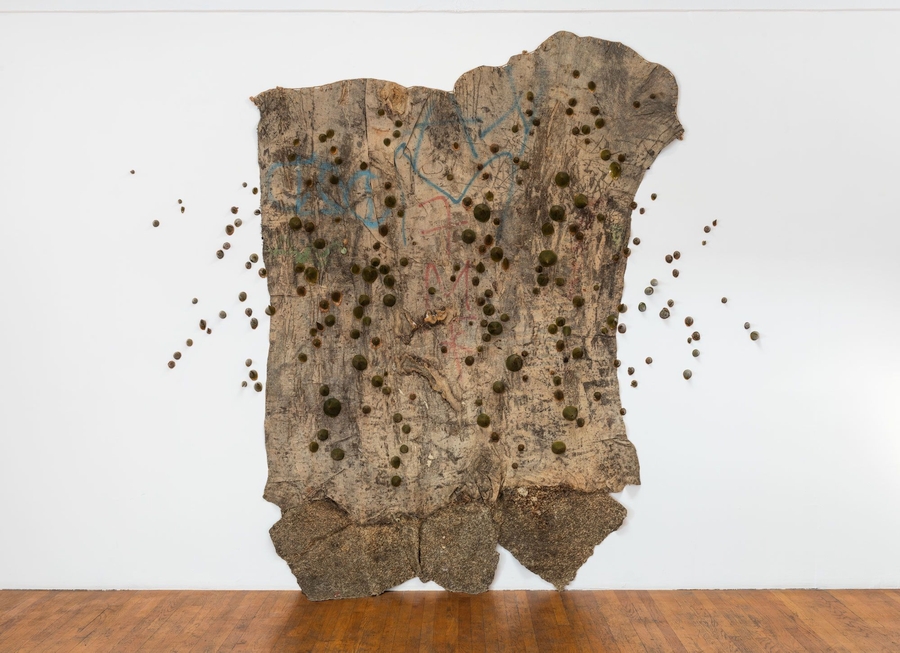

Numerous ceramic sculptures—a more recent material addition to Aparicio’s practice—cling to the rubber tapestries in veiny, organic reliefs. Modeled after growths that in nature are found only on certain trees, here they form a nomadic community of migrant fungi that can associate freely.
Hundreds of hand-built ceramic thorns sprout from a rubber tree trunk—turning the casted tree’s surface into the sacred ceiba tree referenced throughout Mayan spirituality. The thorns also resemble the ceiba tree’s natural defense against the parasitic strangler fig, which plants its seed in a host tree and gradually saps its nutrients, rendering it little more than a substrate which the strangler fig consumes.
The parallels with colonialism and American intervention are clear. Aparicio instead conjures an ecology of survival, equipping his tree laminae with a means of resistance—echoing the efforts of Salvadoran community organizers, most active in Los Angeles since the 1980s. Here the works physically protect themselves highlighting his community’s remarkable self-determination through solidarity and activism.
Throughout Espinas Amorosas/Loving Thorns, entwined threads lead back and forth between El Salvador and Los Angeles, relays along which Aparicio is a spore. Materials themselves are active media, not mere commodities but conduits—agents of history, movement, and memory.




EDDIE RODOLFO APARICIO: ESPINAS AMOROSAS/LOVING THORNS
Commonwealth and Council, 3006 W 7th St #220, Los Angeles, CA
September 18th–October 24th, 2020
También te puede interesar
Beatriz Cortez Envisions a World Outside The Confines of Western Civilization
The Craft & Folk Art Museum (CAFAM) presents "Beatriz Cortez: Trinidad / Joy Station", the El Salvador-born, Los Angeles-based artist’s first major solo museum exhibition. With this presentation, Cortez imagines a space of communal...
LOIE HOLLOWELL: GOING SOFT
Loie Hollowell’s pastel drawings for "Going Soft" explore the physical and psychological experiences of pregnancy, birth, and postpartum. Serving as abstracted self-portraits, each drawing reveals the artist's interior psyche at the time of the...
RAFA ESPARZA: KEEPING
"Keeping", la primera exposición en solitario de Rafa Esparza (Los Ángeles, 1981) en Commonwealth and Council, une fragmentos de nuestra memoria cultural colectiva (con qué nos quedamos, cuáles alegrías y traumas), de las personas...

